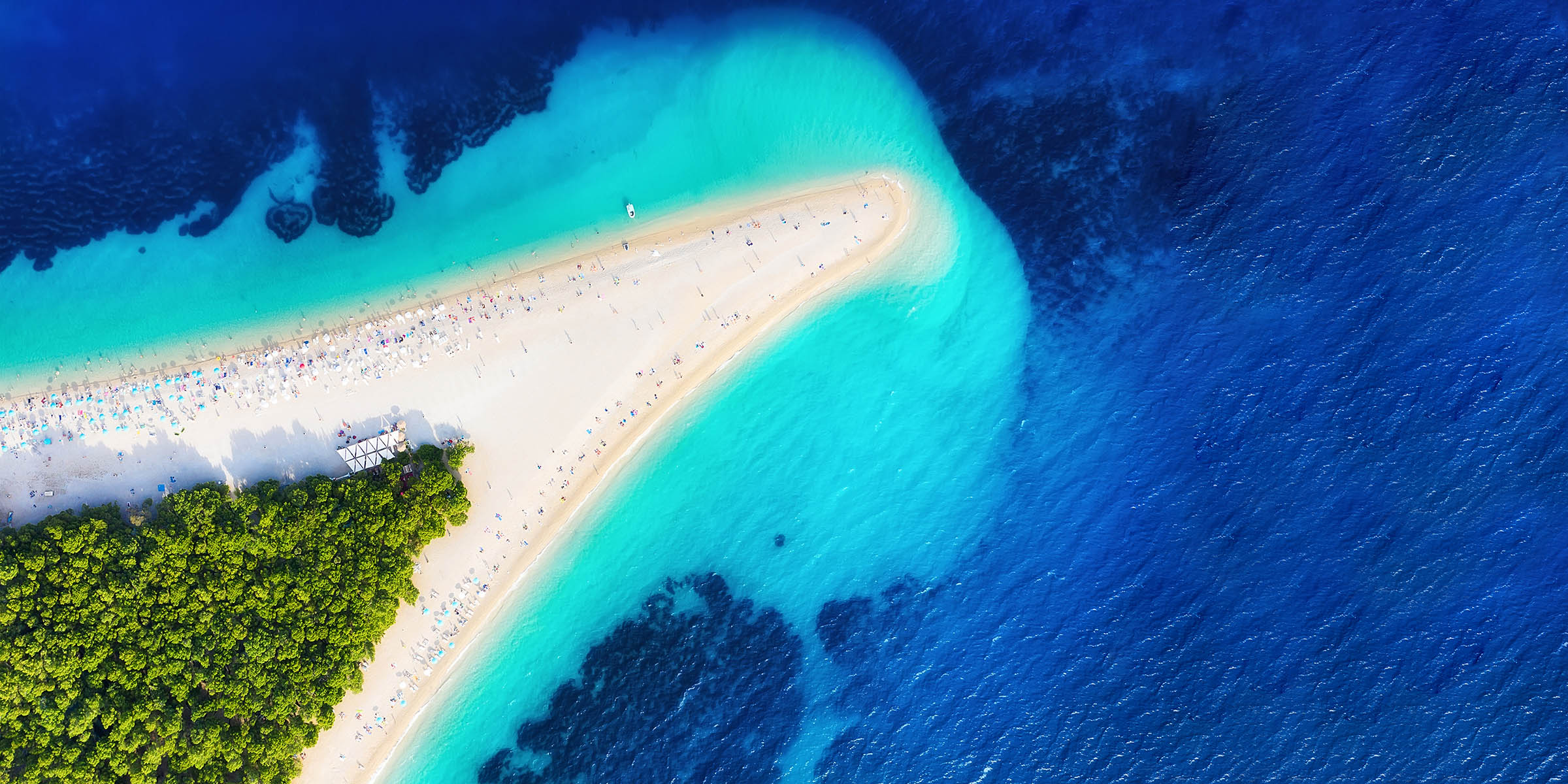Zlatni Rat: 5 things you didn't know

All hotels
Period of stay
| Su | Mo | Tu | We | Th | Fr | Sa |
|---|---|---|---|---|---|---|
| Su | Mo | Tu | We | Th | Fr | Sa |
|---|---|---|---|---|---|---|

| Su | Mo | Tu | We | Th | Fr | Sa |
|---|---|---|---|---|---|---|
| Su | Mo | Tu | We | Th | Fr | Sa |
|---|---|---|---|---|---|---|
Zlatni Rat is a unique phenomenon. Here's a few things you probably didn't know about the most famous Croatian beach.
Scientists say that it was created thanks to several factors - erosion from nearby Vidova Gora hill and the settling of material around the reef caused by sea currents and waves over the years. These same currents and wind are responsible for another phenomenon - changing the shape of the Zlatni Rat. Under their influence, the summit of the Zlatni Rat is sometimes bent to the west, sometimes to the east, and sometimes a small pool appears on it . Because of all this, they call it a geomorphological wonder and it is protected by law as a significant landscape.

According to local chroniclers, the original name of the Zlatni rat was the Long Cape (Dugi Rat). One interpretation of the occurrence of the new name says that it did not get the name "Golden" because of its color, but because of the rich catch of fish, which was the main source of income for the people of Bol, along with the production of wine. The Golden Cape is worth the gold - both then and today.
Today, Zlatni Rat is known as a beautiful white pebble beach, which surrounds the pine forest in the interior of the cape. However, vineyards and fig trees were once planted almost to its edge. Later the cape became a beach and was afforested.

The big attraction at one time was the hang gliders that brave people descended with from the 780 meters high Vidova Gora hill, which rises just above the Zlatni Rat. This was later banned for safety reasons. And the hang gliders weren't the only ones flying around the Zlatni Rat - at one time a seaplane from the Prague-Split-Bol line landed here.
Zlatni rat is one of the few beaches in Croatia where it sometimes snows. Although the color change from "golden" to white is not big, it is really interesting to see this already magnificent beach in snow attire. All the more impressive because Brač is one of the sunniest areas in Croatia with 2500-2600 hours of sunshine a year.
Enter the required details and we'll get back to you shortly.
Enter an e-mail where we can send you a special price calculation for your selected dates, including current discounts